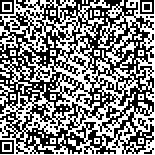| 摘要: |
| 目的 农业面源污染已成为全球亟待解决的环境问题。针对目前研究争论和探讨的热点,文章对国内外农业面源污染的研究方法及进展、评价体系及控制技术进行了分析和提炼,以期为我国绿色农业发展中的面源污染防控提供依据。方法 文章通过查询知网和Web of Science,对国内外农业面源污染研究方法和防控技术进行了分析总结。结果 耕地、果园面积大幅度增长,农村地区畜禽养殖业的迅速发展和城镇生活排污是造成农业面源污染的主要因素。目前国内外的研究热点主要集中在模型模拟技术的适用与拓展、最佳管理模式和应用GIS技术进行面源污染评价。随着面源污染研究的不断发展,植物篱、地埂和生态沟渠等污染控制技术常用于农田面源污染防控;景观绿地建设、旋流分离器和生态湿地系统等则更广泛地应用于大规模治理。新型控制技术的提出使农业面源污染防控技术更加现代化、高效化。结论 未来研究中可结合“4R”防控理论,基于长期定点监测的数据建立模型、利用GIS技术进行流域面源污染模拟以了解区域内的面源污染情况,识别当地面源污染源头区域,提供因地制宜的面源污染治理方案。 |
| 关键词: 农业 农业面源污染 面源污染物 防控模式 污染防治 |
| DOI:10.7621/cjarrp.1005-9121.20210104 |
| 分类号:S143.1 |
| 基金项目:国家十三五重点研发计划课题“三峡库区面源污染景观生态防治技术集成与示范”(2017YFC0505306) |
|
| ADVANCES IN RESEARCH METHODS AND CONTROL TECHNOLOGIES OF AGRICULTURAL NON-POINT SOURCE POLLUTION: A REVIEW |
|
Wang Yige, Wang Haiyan, Zheng Yonglin, Sun Xiangyang
|
|
College of Forestry, Beijing Forestry University, Beijing 100083, China
|
| Abstract: |
| Agricultural non-point source pollution refers to the environmental pollution caused by nutrients such as nitrogen and phosphorus, pesticides, and other organic or inorganic pollutants through farmland surface runoff or leakage fecal pollution. It has become a hot question in global environmental issue. This research analysed and summarized the research methods and progress, evaluation system and prevention methods of agricultural non-point source pollution worldwide. The prevention and control of agricultural non-point source pollution was still a difficult problem for China's sustainable agricultural development in the 21st century. Based on foreign advanced technology and treatment experience, we put forward some suggestions for the future study which may provide a basis for practical treatment of agricultural non-point source pollution in China to ensure the sustainable development of the Chinese economy. By searching China National Knowledge Internet and Web of Science, it summarized the research methods and prevention and control technologies of agricultural non-point source pollution at domestic and abroad. The large increase of arable land and orchards, the rapid development of livestock and poultry farming, and urban sewage discharge were the main factors causing agricultural non-point source pollution. Non-point source pollution research was generally based on long-term fixed-point observations or field experiments resulting in serious regional conclusions and uncertainties. In contrast, model establishment would make the regional study more effective and direct by performing spatial and temporal simulation, inferring the pollution situation of the entire river basin with small watershed samples, and estimating non-point source pollution load. At present, researchers focused on the application and expansion of model simulation technology, the Best Management Practices and the application of GIS technology for non-point source pollution evaluation. Plant hedgerows, ridges and ecological ditches were generally used in the prevention and control of farmland pollution; landscape green space construction, hydraulic separators, constructed wetland systems and other control technologies were more widely applied to large-scale governance. The introduction of new technology had made agricultural non-point source pollution prevention and control technology more modern and efficient. However, there is still a lack of widely used non-point source pollution control technology in the international scope. Model simulation based on long-term fixed-point monitoring data in combination with “4R” prevention and control theory and GIS technology would contribute to identifying the source area of non-point source pollution. In principle, source control and local measures are more emphasized. Therefore, after understanding the situation of non-point source pollution in the study area and identifying the local source area, we can provide a non-point source pollution control plan adapted to local conditions. With the update of new agricultural non-point source pollution control technology, non-point source pollution control will become more comprehensive and efficient. In the future, attention should be paid to the impact of agricultural non-point source pollution especially nitrogen and phosphorus leaching caused by farmland infiltration on groundwater. |
| Key words: agriculture agricultural non-point source pollution non-point source pollutant prevention mode pollution control |

